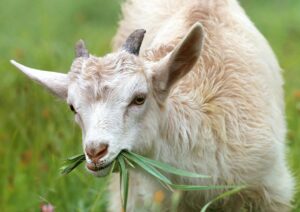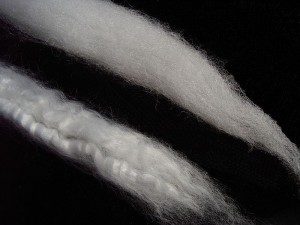Everyone loves cashmere, right? The word is synonymous with softness, luxury, and a sense of superiority. It doesn’t get much better than cashmere. The world has a cashmere dilemma on its hands, however: demand is rising and prices are falling. The pandemic and climate change have also exacerbated some ethical issues in the supply chain. How can consumers buy cashmere ethically?
Issues In The Cashmere Industry
There are three big problems in the cashmere business: rising demand, lower prices for raw materials, and climate change. As is the case with just about everything in the world, the COVID-19 pandemic has its ugly hands intertwined with these issues as well.
Supply & Demand
Cashmere accounts for about 7% of the $71.2 billion global luxury goods industry. Demand for cashmere has been on the rise for years now, at least since the beginning of the 21st century. Lower-end retailers such as Uniqlo carry cashmere sweaters in a massive array of styles and colors, and they sell them at bargain-basement prices.
Given that the average yield per goat is only about 4 ounces of usable fiber, this has strained the supply. Unsurprisingly, farmers boost their flocks’ numbers to meet this demand. In fact, the number of cashmere goats worldwide is approximately five times what is was thirty years ago.
The problem here is that while you can increase the size of flocks, you can’t increase the amount of land on which they graze. Mongolia, the country from which the majority of raw cashmere is sourced, is mostly dryland to begin with, so it’s already ripe for desertification. The overgrazing that results from increased flock numbers exacerbates this problem.
Environmental Concerns
Climate change is another factor that has negatively influenced cashmere production. For whatever reason, Mongolia’s average temperature rise has far outpaced the average for the rest of the world. Since 1940, the globe’s average temperature has risen by about 1.5 degrees. In Mongolia, this average is four degrees, or nearly three times the global average.
The world’s primary source of raw cashmere is in danger of becoming a desert that can’t feed its flocks.
Raw Material Pricing
 Largely as a result of the pandemic, the price for raw cashmere is plunging. The logic is tragic, but simple: 2020 saw far fewer shoppers in stores than recent years due to various degrees of lockdowns and restrictions, depending on your state and/or city. As a result, sales were way down industry-wide.
Largely as a result of the pandemic, the price for raw cashmere is plunging. The logic is tragic, but simple: 2020 saw far fewer shoppers in stores than recent years due to various degrees of lockdowns and restrictions, depending on your state and/or city. As a result, sales were way down industry-wide.
When sales are down this much, retailers tighten their belts as much as possible. This means they rely on existing stock instead of buying new goods. When supplies stay the same but demand decreases, we see a decrease in price. While as a consumer it might seem beneficial to potentially pay less for cashmere, this price plummet has real-world consequences: Gobi Cashmere, Mongolia’s largest cashmere processing factory, laid off 10% of its workforce due to falling prices.
What The Industry Is Doing
 The global cashmere supply chain lacks standardization, so mills, retailers, and end users can’t trace where raw materials come from. There are two dangers that stem from this:
The global cashmere supply chain lacks standardization, so mills, retailers, and end users can’t trace where raw materials come from. There are two dangers that stem from this:
First, farmers may not be getting paid fairly for their wares. The moral argument in favor on an honest day’s pay for an honest day’s work should overshadow any other part of the discussion.
Second is the issue with production across the border in China. Cashmere industry executives have questions about the treatment of the animals in Chinese facilities, for one. From a consumer-protection standpoint, the Chinese cashmere industry has a reputation for unscrupulousness. Accusations of fiber adulteration – mixing cashmere with lesser materials like extra-fine merino wool – are not uncommon.
There needs to be some kind of standardization across the industry, similar to that which exists for vicuña. Organizations such as the UK’s Sustainable Fibre Alliance, Germany’s Aid by Trade Foundation, and the South Gobi Cashmere Project all attempt to offer traceability and assurances that farmers are properly compensated and the animals well cared for.
How To Buy Ethically
Big brands like Burberry, Hugo Boss, Balenciaga, YSL, and others have either aligned themselves with the aforementioned groups or simply made it a point to source their cashmere ethically in the first place. While we don’t yet have an industry-wide marker for responsibly-sourced cashmere, we look forward to getting there. If we want to be able to wear this rich, luxurious fiber into the future, the health of the animals, livelihoods of the farmers, and viability of the land must be protected.



